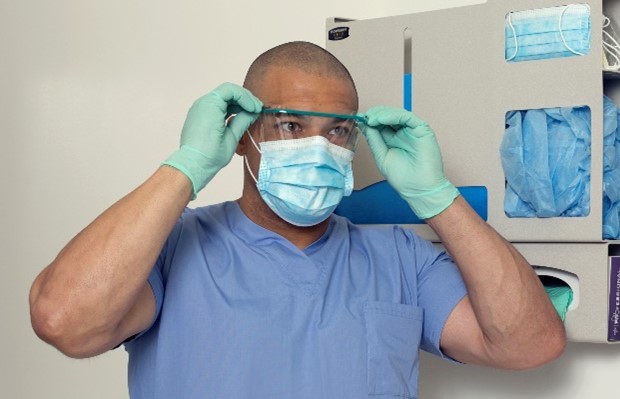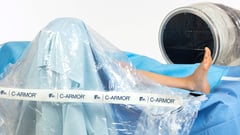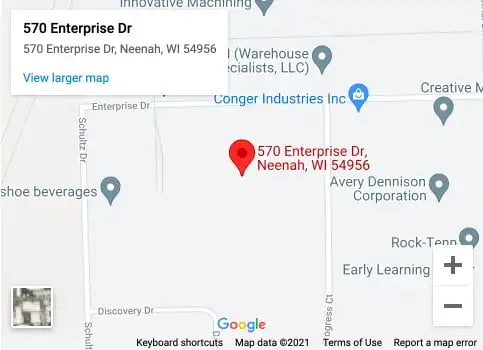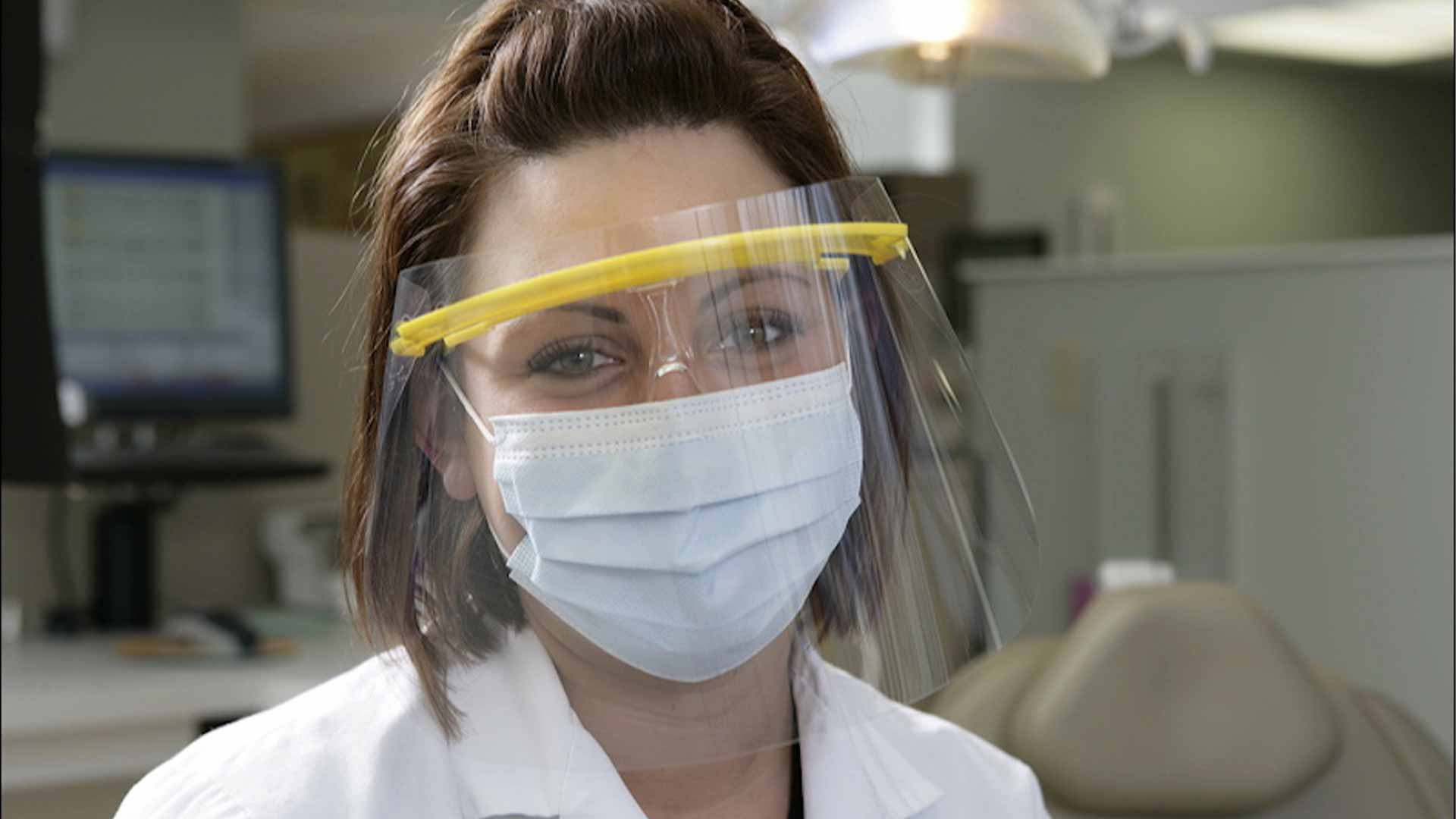 In healthcare settings, nurses are among the most vulnerable workers when it comes to eye contamination. About 60% report experiencing the number-one cause of all non-sharps blood and bodily fluid exposures — eye splashes.1 Using face shields or eye shields could be the key to reducing this startling percentage, but accessibility at point of care can be a challenge.
In healthcare settings, nurses are among the most vulnerable workers when it comes to eye contamination. About 60% report experiencing the number-one cause of all non-sharps blood and bodily fluid exposures — eye splashes.1 Using face shields or eye shields could be the key to reducing this startling percentage, but accessibility at point of care can be a challenge.
There are also other factors to consider. According to the Centers for Disease Control and Prevention (CDC), exposure circumstances, other PPE use, and individual vision needs play into the selection of appropriate type of medical eye protection.2
Let’s take a look at the coverage and protection face shields and eye shields/glasses offer nurses and other healthcare professionals.
Face Shields as Protective Eyewear for Nurses
Face shields cover the entire face which, when used in tandem with other PPE such as masks and goggles, offers a substantial layer of protective barriers for at-risk mouth, nose, and eye membranes. Face shields also discourage nurses from inadvertently or absentmindedly touching their faces; their eyes, nose, or mouth in particular — an act that happens as often as 23 times per hour, with about one-quarter of the hand touches to the eye.3
Assembly and storage of face shields away from point of care can challenge use. If clinicians or nurses have to spend time trying to find or assemble face shields, that’s critical time away from patients — and a detractor from following compliance protocols. Eye shields face similar obstacles.
Eye Shields as Protective Eyewear for Nurses
A common misconception is that prescription eyeglasses may be sufficient protective eyewear for nurses in the event of an eye splash or other eye contamination events. While eyeglasses may prevent initial direct splashes from infiltrating the eye, they are simply not designed for protection. A lack of barrier protection on the sides, bottoms, and tops of prescription eyeglasses still puts nurses and other healthcare providers at substantial risk.4
The CDC, American National Standards Institute (ANSI), and the Occupational Safety and Health Administration (OSHA) all emphasize the importance of using medical eye protection with solid state shields at the point of care to prevent contamination from splashes.3 When eyewear and eye shields that maximize splash protection for nurses are available at point of care, compliance is 5 times more likely.5
However, some healthcare industry professionals suggest that a lack of accessibility at point of care is a key contributor to non-use. For nurses, that opens the door to considerable risk since eye splashes in patient rooms outpace similar events in operating rooms by a 5:1 ratio.1
Protective eyewear for nurses — and medical eye protection in general — is increasingly important in healthcare settings, but lack of accessibility at point of care remains a barrier to consistent use.
To combat this barrier, TIDI Products offers the TIDIShield® Grab ‘n Go™ Eyewear Dispenser—the only patented gravity-fed dispenser to house pre-assembled eyewear at the point of use.
SOURCES
1EPINet Report for Blood and Body Fluid Exposures, January 4, 2017. Accessed January 29, 2018.
2CDC, https://www.cdc.gov/niosh/topics/eye/eye-infectious.html
3Halyard Health, Infection Prevention Best Practices for Surgical Staff
4Managed Healthcare, Eye Protection Is Key to Preventing COVID-19
5Green-McKenzie J, Greshon R, Karkashian C. Infection Control Practices Among Correctional Healthcare Workers: Effect of Management Attitudes and Availability of Protective Equipment and Engineering Controls. Infect Control Hosp Epidemiol. 2001; 22(9):555-9






 In healthcare settings, nurses are among the most vulnerable workers when it comes to eye contamination. About 60% report experiencing the number-one cause of all non-sharps blood and bodily fluid exposures — eye splashes.
In healthcare settings, nurses are among the most vulnerable workers when it comes to eye contamination. About 60% report experiencing the number-one cause of all non-sharps blood and bodily fluid exposures — eye splashes.